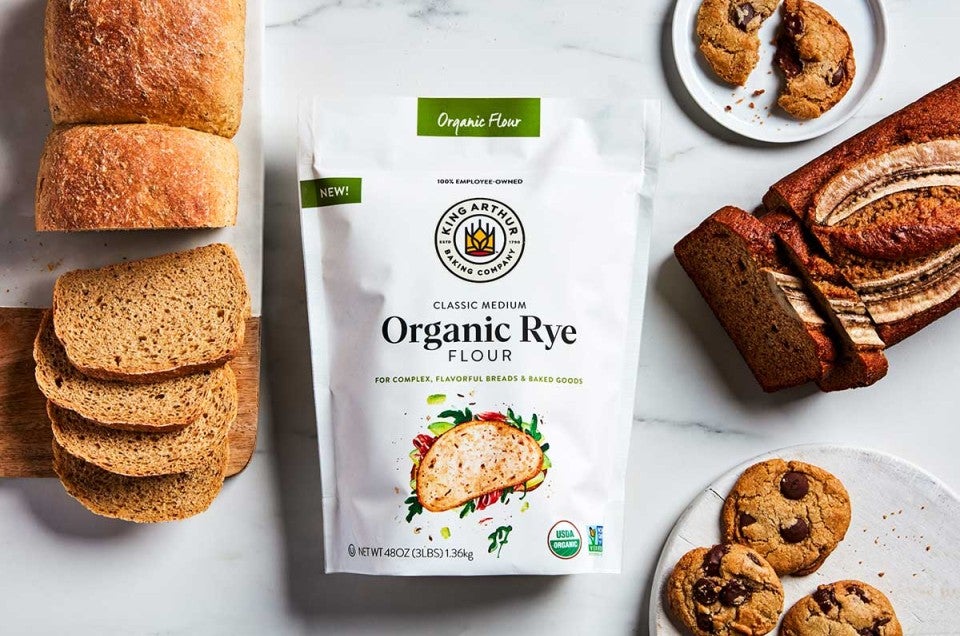


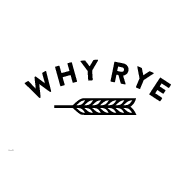 Over the next few weeks, we're celebrating rye flour and all the baking possibilities it offers, from complex flavor to surprising versatility. Join us each week as we explore just why you should be baking with rye.
Over the next few weeks, we're celebrating rye flour and all the baking possibilities it offers, from complex flavor to surprising versatility. Join us each week as we explore just why you should be baking with rye.
Imagine growing up thinking there’s only one kind of ice cream: let’s say the typical vanilla ice cream that comes from the grocery store. It’s just what you’re looking for in certain situations (like topping off a warm slice of pie), but that classic vanilla is only one type of ice cream. Think of all the other incredible flavors out there that you’d be missing out on.
That's the one-dimensional life you’ve been living if you’re only baking with one kind of flour! It’s time to unlock a whole new world of texture and flavor possibilities — it’s time to start baking with rye.
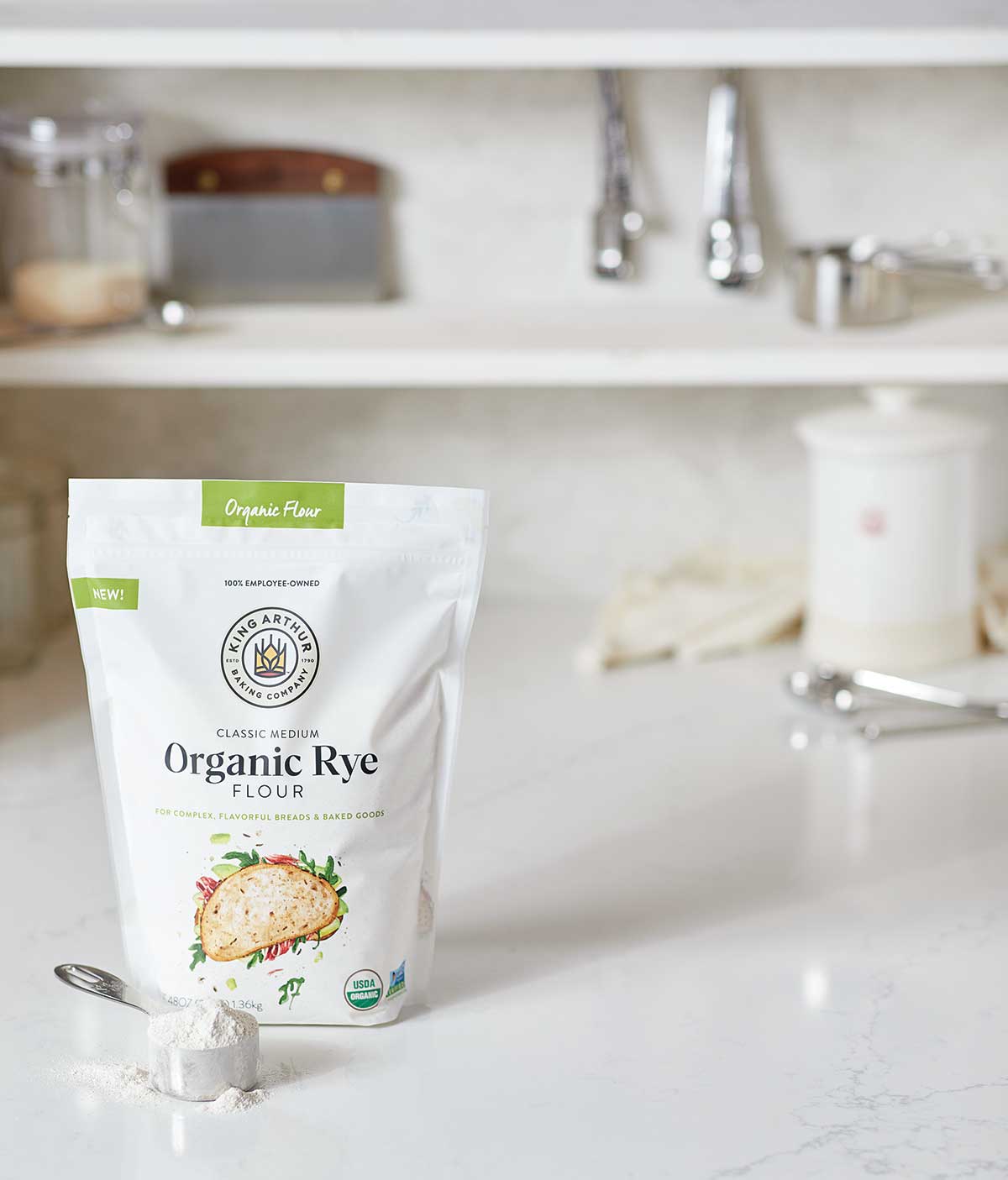
The downfall of rye flour is that many bakers think the prominent flavor in most rye breads — that bittersweet, sharp taste with a hint of citrus, pepper, and anise (licorice) — comes from rye flour.
Breaking news! That's NOT the flavor of rye — that's caraway, a common (yet polarizing) addition to rye bread. This amazing grain has gained a tainted reputation over the years: being mistakenly perceived as caraway and only good for one thing — bread.
Don't get me wrong: rye bread can be delicious. But rye is also right at home in so many other treats beyond bread: pastry, cookies and even quickbread, to name a few.
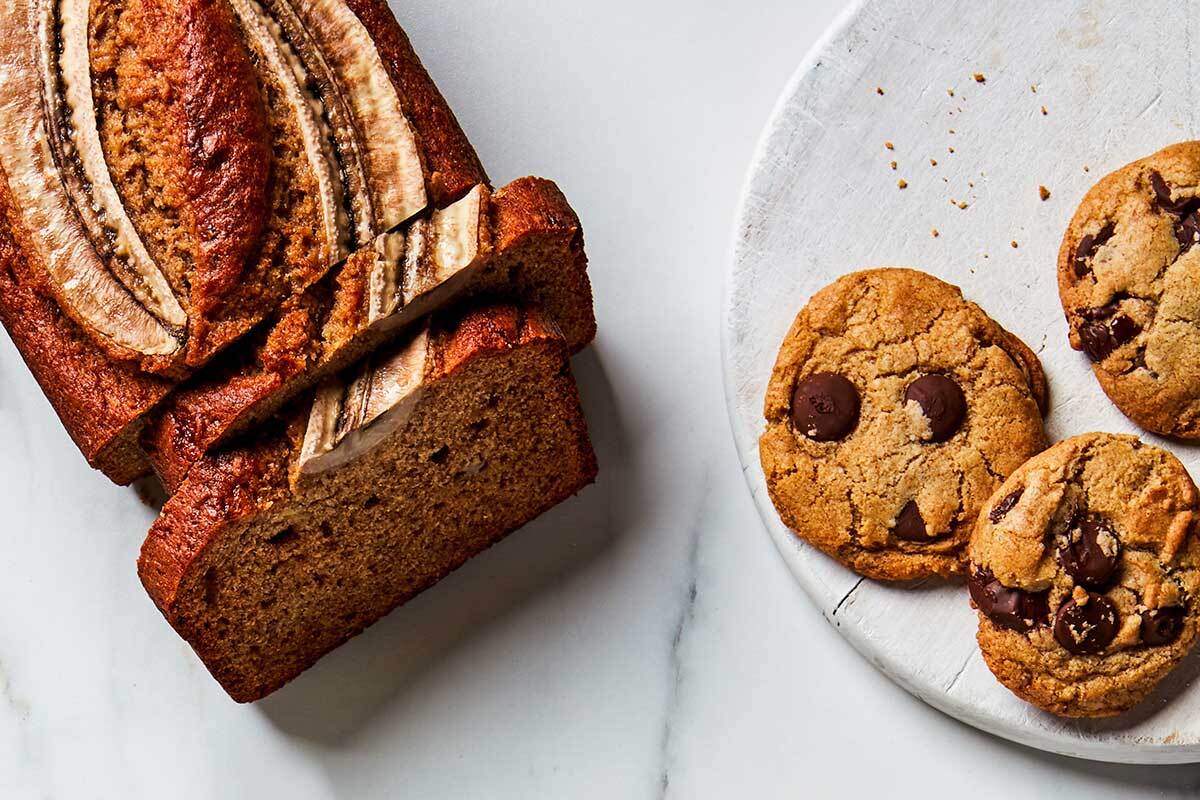
If you think you don't like the taste of rye, be brave: challenge yourself and your taste buds and try baking with rye flour again.
This grain has been touted for both its environmental and health benefits, which may be enough to make it worthy of a place in your pantry. But as bakers, we're most excited about the complex flavor experience that rye offers, as well as the unique texture it lends. Here's what to expect:
Baking with rye is always an adventure in both flavor and texture; it's an easy way to put a refreshing spin on old classics.
Our innovative King Arthur bakers have come together and created recipes that showcase the very best qualities of rye — here are three stellar recipes to start with, from a classic favorite to more unexpected ways to bake with rye.
Before our test kitchen bakers set out to explore all rye had to offer beyond yeast bread, they first wanted to nail a beloved favorite: a recipe for rye sandwich bread that would deliver success in home kitchens. They set out to establish the ideal balance of rye to wheat flour so that the dough would be easy to work with while still delivering the distinct flavor and color of rye.
The result? Our Classic Rye Sandwich Bread recipe, a blend of unbleached bread flour and rye flour with a touch of molasses (or honey — your choice) and a smidge of butter for softness.
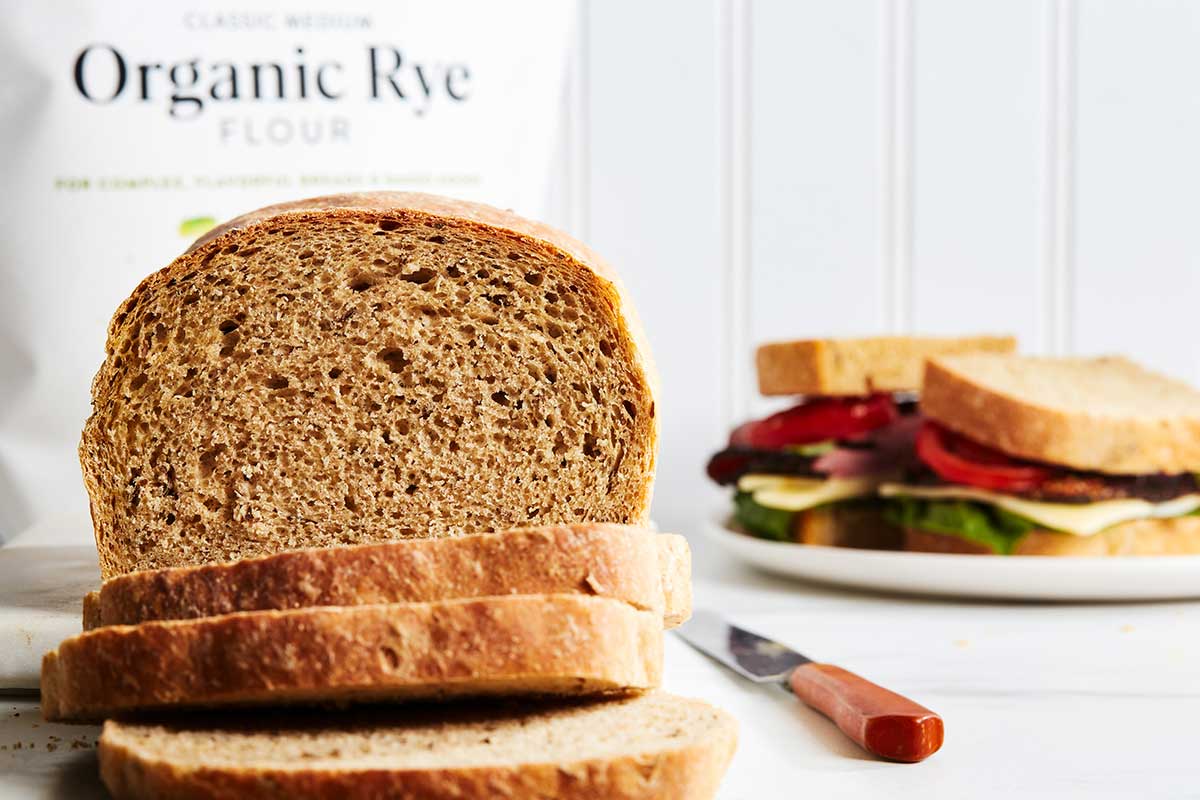
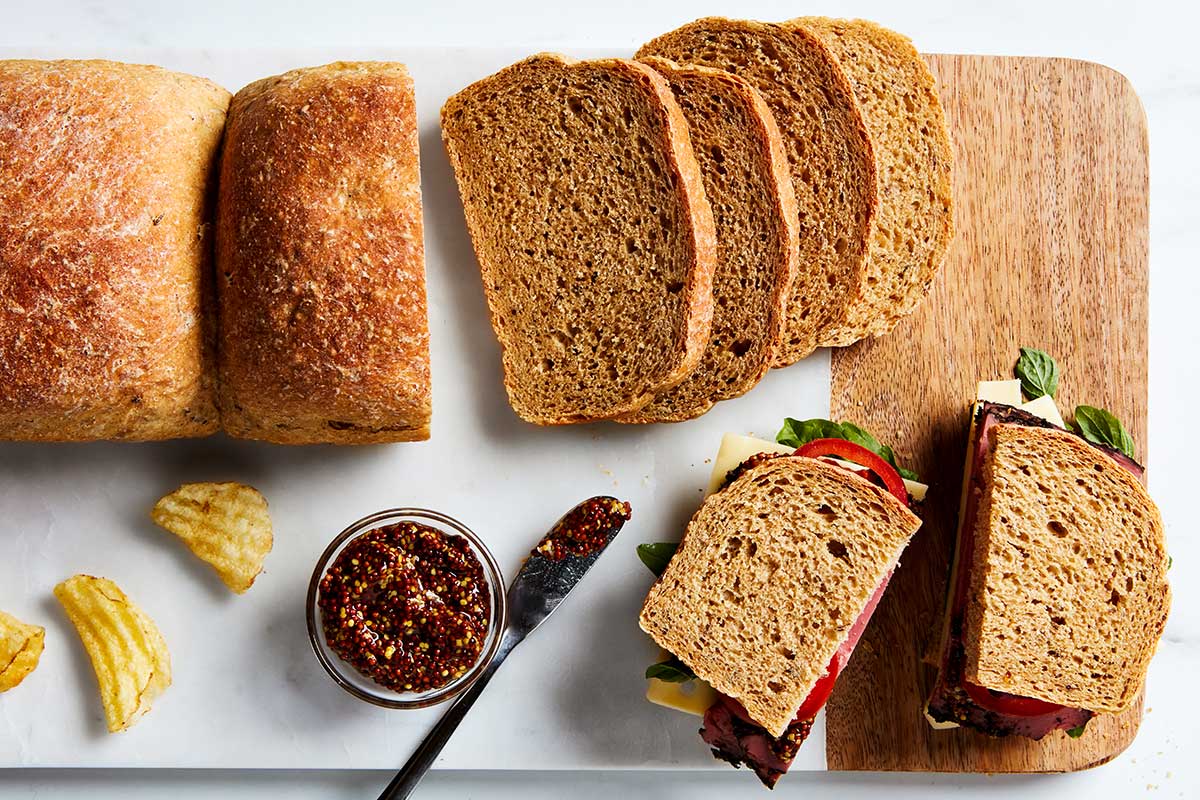
Where to go from classic sandwich bread? Two baked goods that go beyond yeast baking and showcase all that rye has to offer: banana bread and chocolate chip cookies, a pair of classic recipes ideal for rye-ification.
First, Rye Banana Bread. Jon, a member of our Research & Development Team, shares his memories of initially working on the recipe. "I was shocked when I pulled the first test loaf from the oven. It was 100% rye, and I was sure it would fail." He was expecting a dense, gummy loaf that would require some white flour for structure and rise.
What came out of the oven was a surprising delight! It was a moist, tender loaf that had the slightest bit of chew to it, which made the bread easy to slice: it held up nicely, even when served warm.
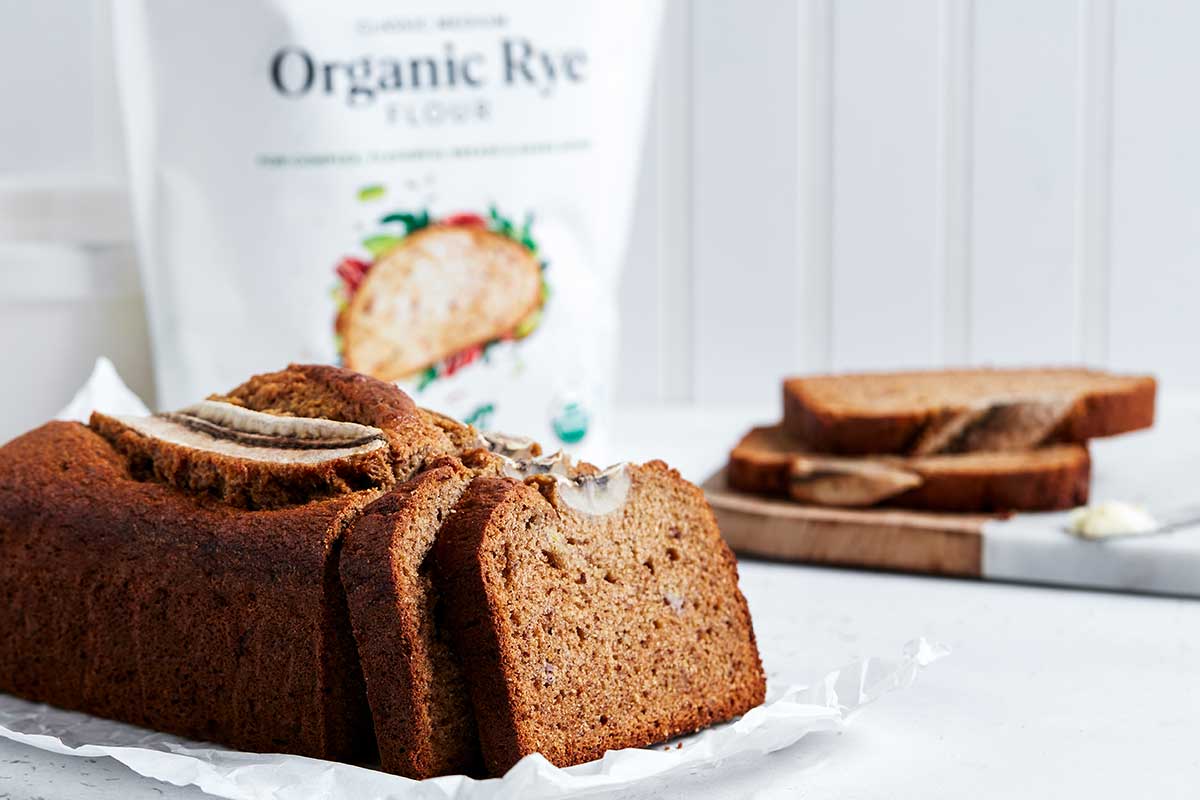
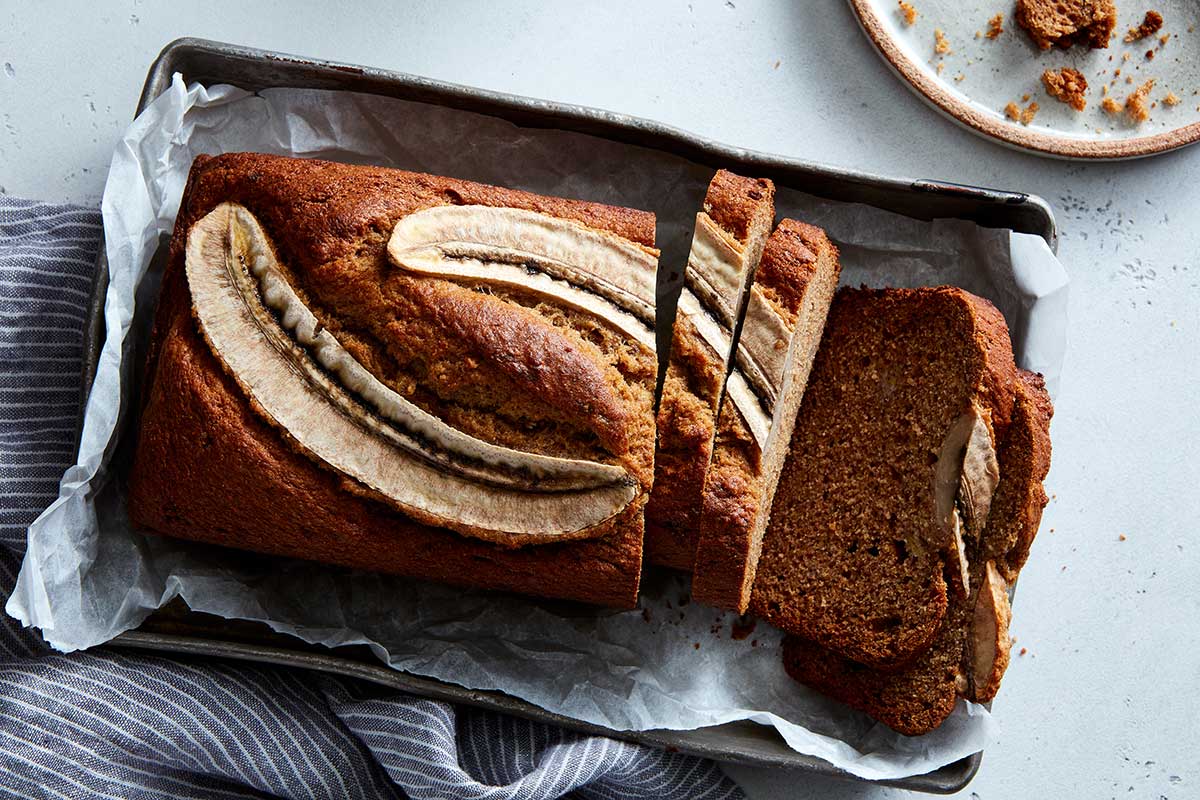
With the success of the banana bread behind him, Jon started testing 100% Rye Chocolate Chip Cookies using our original beloved Chocolate Chip Cookies recipe as inspiration.
The first batch of 100% rye cookies weren’t quite the smashing success the banana bread had been right from the start. While the flavors of chocolate and rye blended together beautifully, the cookies didn’t spread very much, and as a result they didn't deliver the nostalgic eating experience Jon was trying to achieve.
Knowing that he couldn't just add liquid (it would make the cookies cakey), Jon tried increasing the amount of butter in the recipe and also melting it before adding the rest of the ingredients. That tweak did the trick!
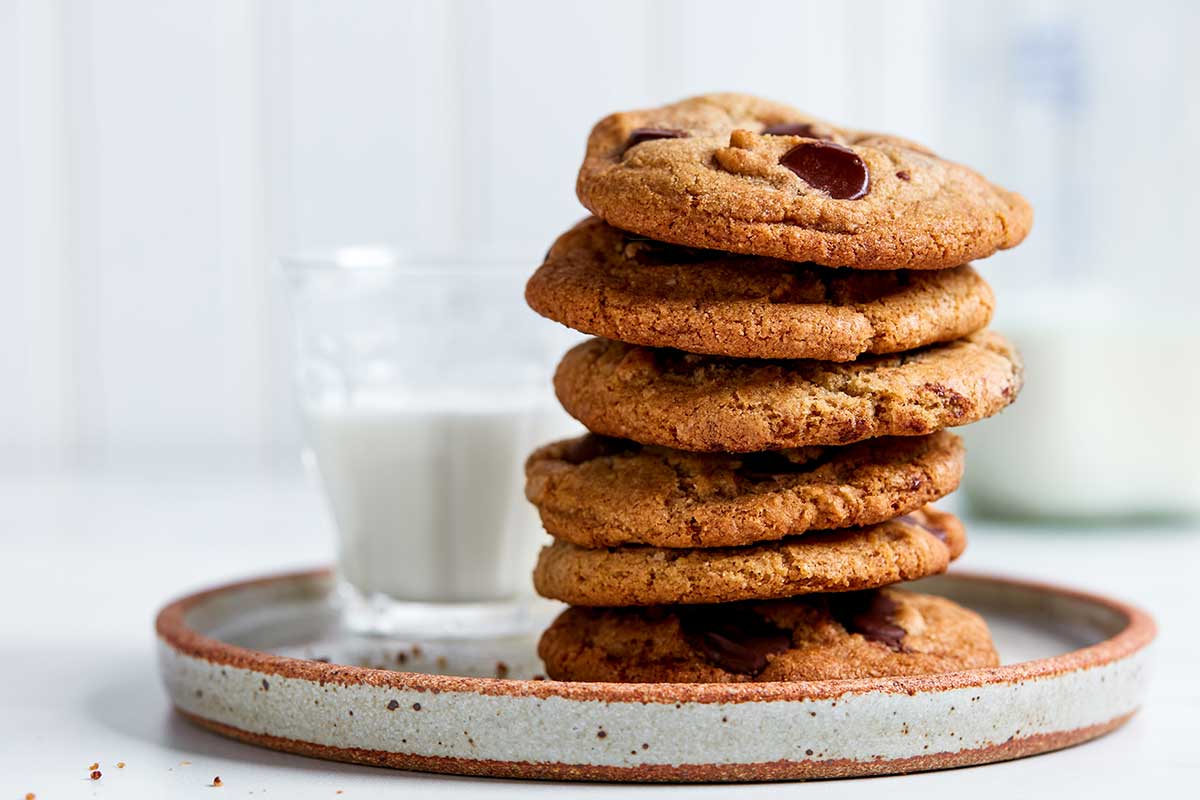
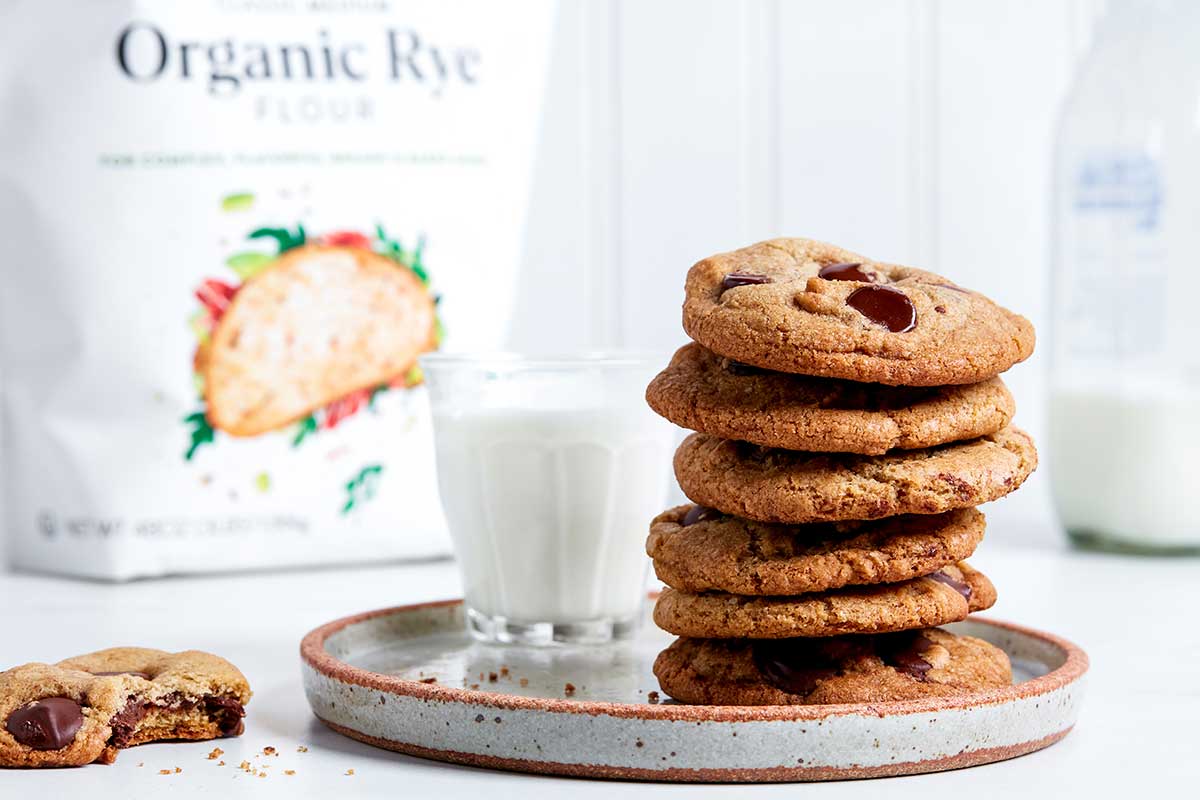
Whether you're new to baking with rye flour or you've been baking rye bread at home for years, there are plenty of new experiences waiting for you. Try something novel: Rye Banana Bread with hints of cardamom, or Rye Chocolate Chip Cookies with dark chocolate chips, or another one of our innovative recipes fresh from the test kitchen (like the stunning yet simple Rye Gingerbread, below).
Be prepared for flavors and textures you're going to fall in love with!
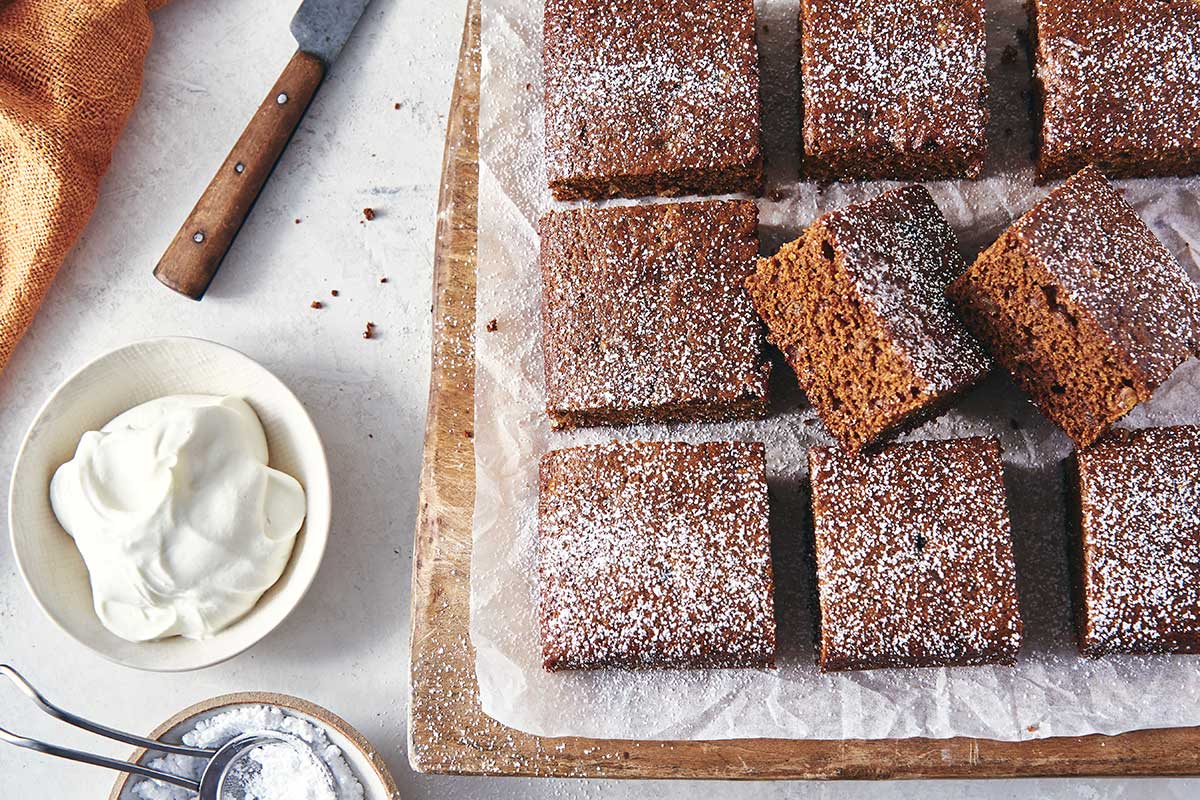
We've got more blog posts about rye coming your way — tell us what you want to know! How to substitute rye into your favorite recipes? How is rye different than wheat? Ask away, in the comments below.